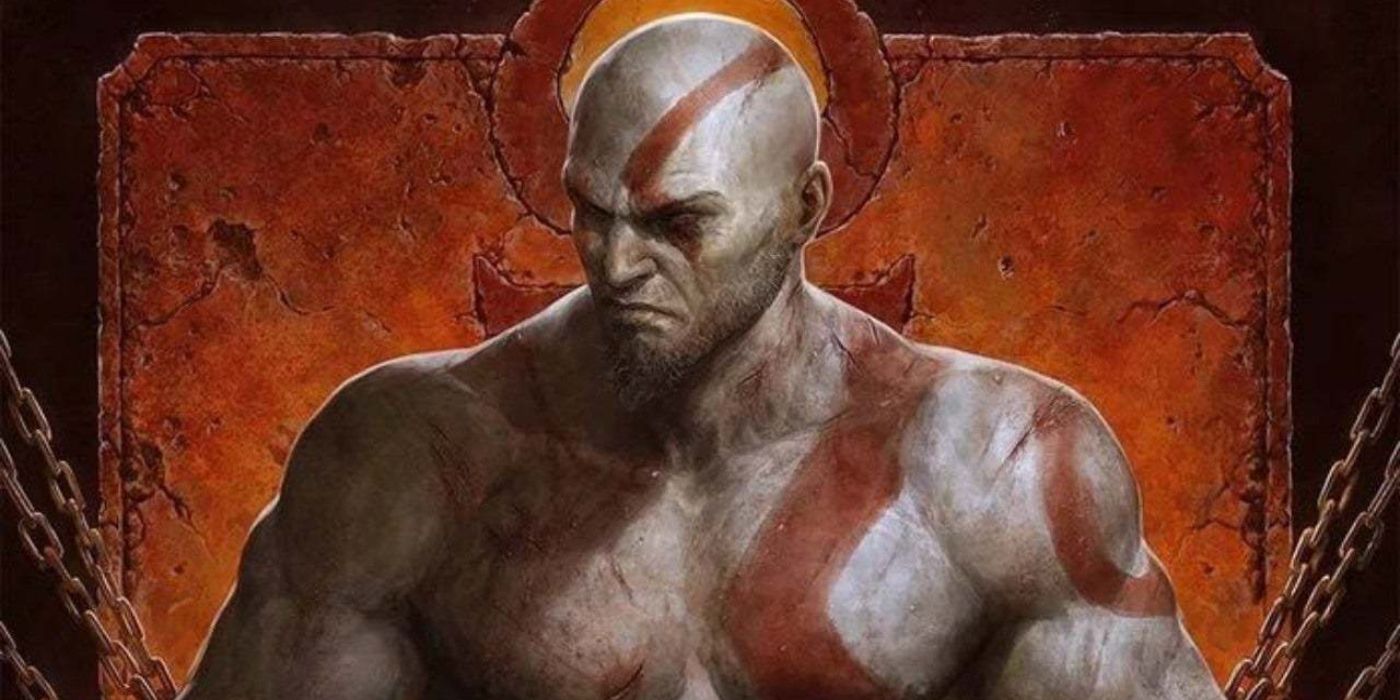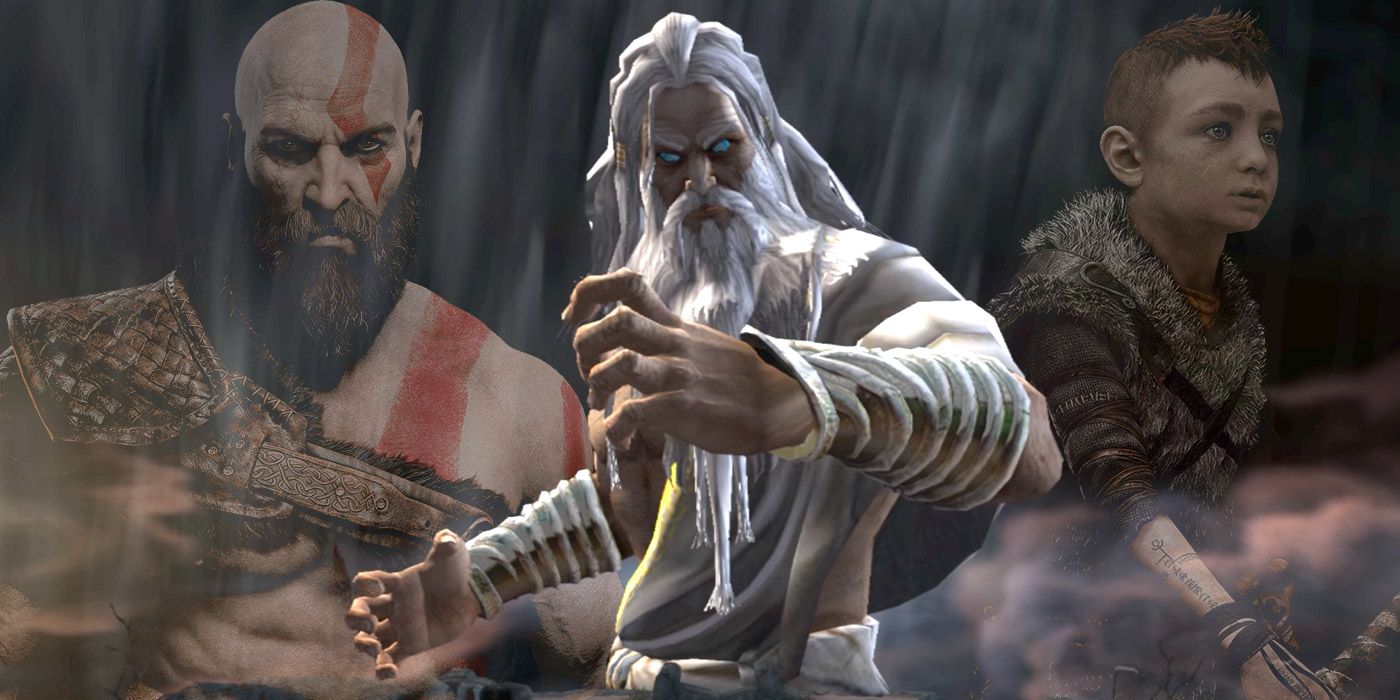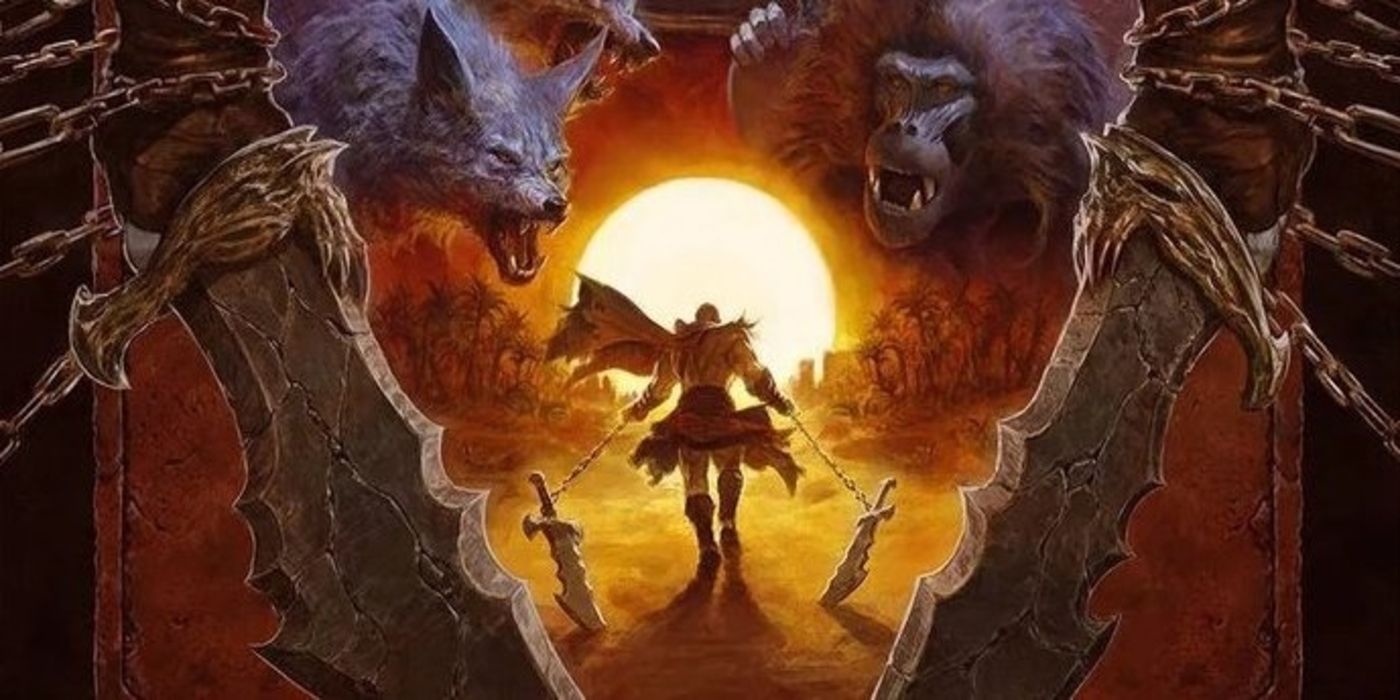While the original God of War trilogy focused entirely on the Greek pantheon, God of War 2018 showed the existence of the Norse gods, while also hinting at the existence of Celtic, Mayan, Egyptian, and Japanese gods. The latest addition to the franchise is God of War: Fallen God, a comic series from Dark Horse which aims to bridge the gap between the end of God of War 3 and the start of the 2018 game.
It has never been explained where the gods in the series come from, or how exactly multiple pantheons are able to exist at once across the world of God of War. However, there is one small detail in God of War: Fallen God which could hint that the comics will begin to explore just where gods of all cultures come from.
The Gods In God of War
There are a few ways to interpret the universe of God of War. In the original God of War trilogy, this was relatively straight forward. Kratos existed in a world where, as far as the player knew, the Hellenic account of the cosmos was reality. There were the Greek gods, each tied to an element of nature or an aspect of life in some way. Their king was Zeus, they lived on Mount Olympus, they had been preceded by the Titans, and so on.
God of War 2018 shattered that simple explanation. As soon as the story began it was clear that Kratos was now in a world run by the rules of Norse mythology. He seemed to have achieved this by physically moving from ancient Greece to Norway. It's possible to interpret the gods of God of War as simply a race with superhuman abilities that causes them to be interpreted as gods by the human worshippers of different lands. However, this raises some big questions that are hard to answer.
For example, in God of War 2 Kratos encounters the Sisters of Fate, who are able to control destiny using the Loom of Fate. It would seem strange if they only controlled the fate of the mortals in ancient Greece. On the other hand, fate continues to unfold for Kratos after killing the Sisters of Fate, which might imply that the Sisters of Fate could manipulate the destiny of others, though they were not the originators of fate itself and were separable from it.
The same dilemma can be raised regarding some of the locations seen in the series so far. After being killed at the start of God of War 2, Kratos goes to the Greek Underworld before being rescued, but in 2018's God of War Kratos and Atreus go to Helheim, one of the Norse afterlives. Once again, this could imply that different cosmologies apply to different groups - that the dishonored Norse dead go to Helheim while the dead of ancient Greece went to Hades. This in turn could imply that the gods of God of War only have domain over certain areas of the world. There is a hint in God of War: Fallen God, however, that another factor may also be at play.
The existence of the Egyptian pantheon is hinted at on the broken mural panel of Tyr in 2018's God of War. In each corner, there is a symbol representing war in different cultures. Kratos recognizes the symbol for war in ancient Greece, but there are also symbols from Celtic, Japanese, and Egyptian mythology, implying that all of these pantheons also exist or existed in the world of God of War.
Fallen God
Kratos passes through "the land of the Pharaohs" in God of War: Fallen God. However, he does not necessarily encounter any of the Egyptian gods on his journey. This could be because they have already gone extinct by the time Kratos destroyed the Greek pantheon. It's unclear if pantheons from different time periods exist simultaneously in the God of War universe, or are connected to a specific period of time in which they were widely worshipped.
Instead of encountering any Egyptian gods, Kratos encounters two animals who talk to him on his journey through Egypt, a baboon and an ibis. In Egyptian mythology these could represent Babi the baboon or the god Thoth, whose symbol was an Ibis. However, despite having met gods and a whole cast of other mythical creatures before, Kratos is unsure if he's hallucinating or not. There's an ambiguity as to whether these figures exist outside of Kratos' mind, which could begin to hint at how the gods really work in the God of War universe.
Although it has never been confirmed, it could be the case that belief itself plays a role in the power of the gods. These possibly hallucinatory figures Kratos encounters only tell him things he already believes — that he is ultimately unable to escape his past or his destiny. The reason these figures do not unambiguously appear as Egyptian gods could be because the people of Egypt no longer believe in the ancient Egyptian pantheon by the time Kratos begins his journey away from Greece. However, the exact timeline of God of War, or if the world of God of War aligns with real world history at all has not been confirmed.
Nonetheless, by exploring figures like the baboon and ibis seen in the first issue of God of War: Fallen God, the comic series hints at the possibility that gods, their domains, and maybe even their origins may be connected to the minds of the people who believe in them in some shape or form. If fleshed out further in the rest of the comics, God of War: Fallen God may not only explain how Kratos made his way from ancient Greece to Scandinavia in terms of his physical journey. The comics could also explain how it was possible at all for him to pass from a world which abided by the rules of the the ancient Greek religion to one that followed the Norse religion.
God of War: Fallen God's first issue is available now.



